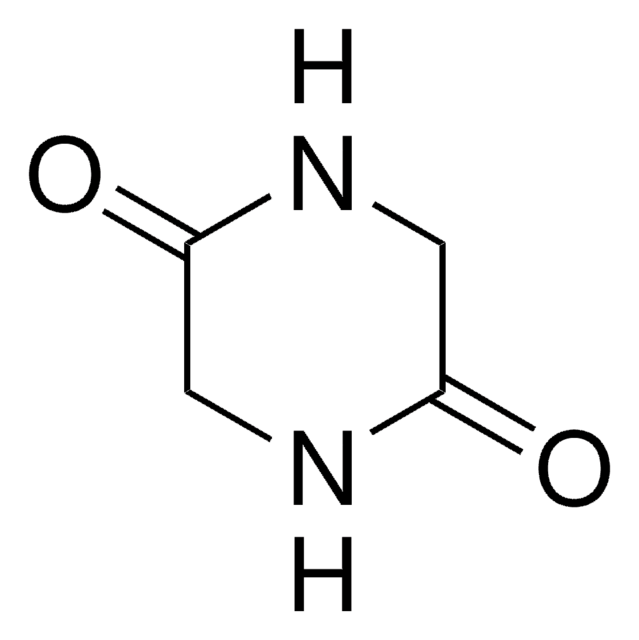1295800
USP
Glicina
United States Pharmacopeia (USP) Reference Standard
Sinónimos:
Glicocola, Ácido aminoacético, Ácido aminoetanoico
About This Item
Productos recomendados
grado
pharmaceutical primary standard
familia API
glycine
fabricante / nombre comercial
USP
pH
4(0.2 molar aqueous solution)
pKa (25 °C)
(1) 2.35, (2) 9.60
2.35
mp
240 °C (dec.) (lit.)
aplicaciones
pharmaceutical (small molecule)
formato
neat
cadena SMILES
NCC(O)=O
InChI
1S/C2H5NO2/c3-1-2(4)5/h1,3H2,(H,4,5)
¿Está buscando productos similares? Visita Guía de comparación de productos
Descripción general
Aplicación
- Glycine Irrigation
- Theophylline Sodium Glycinate
- Glycyl-l-tyrosine
- Glycyl-l-glutamine
- Pyrroloquinoline Quinone Disodium
Acciones bioquímicas o fisiológicas
Nota de análisis
Otras notas
Producto relacionado
Código de clase de almacenamiento
13 - Non Combustible Solids
Clase de riesgo para el agua (WGK)
WGK 1
Certificados de análisis (COA)
Busque Certificados de análisis (COA) introduciendo el número de lote del producto. Los números de lote se encuentran en la etiqueta del producto después de las palabras «Lot» o «Batch»
¿Ya tiene este producto?
Encuentre la documentación para los productos que ha comprado recientemente en la Biblioteca de documentos.
Los clientes también vieron
Nuestro equipo de científicos tiene experiencia en todas las áreas de investigación: Ciencias de la vida, Ciencia de los materiales, Síntesis química, Cromatografía, Analítica y muchas otras.
Póngase en contacto con el Servicio técnico







